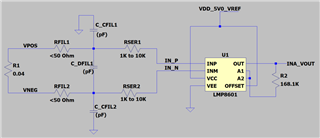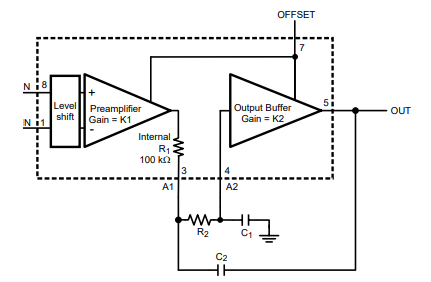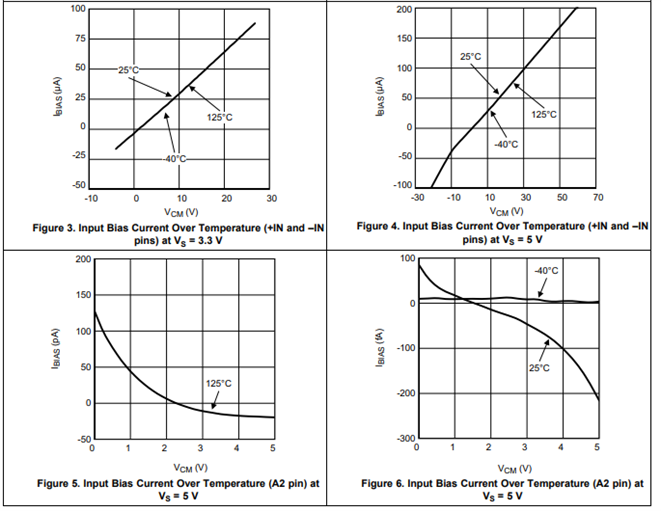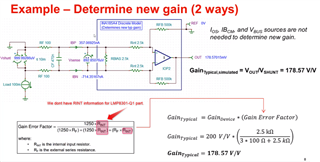Other Parts Discussed in Thread: LMP8601, LMP8602-Q1, INA185, LMP8602
We are monitoring the current through a Shunt resistance of 40mOhm through LMP8601-Q1 with an GAIN configuration of ~50V/V.
For the diagnostic purpose, we would like to inject some voltage at IN+ & IN- pins with a voltage difference for which following circuit modules would response.
To do so, we really need the resistance ("RSER1 & RSER2") at the IN+ & IN- pins in the range of 1K ohm to 10K ohm.
So now the questions are,
1. Is it allowed to have 1K ohm to 10K ohm resistance in front of IN+ & IN- pins of LMP8601-Q1 device?
2. What is the functional impact of having high input resistance in front of IN+ & IN- pins of LMP8601-Q1 device?
Refer the LMP8601-Q1 input path proposal in the figure below:









